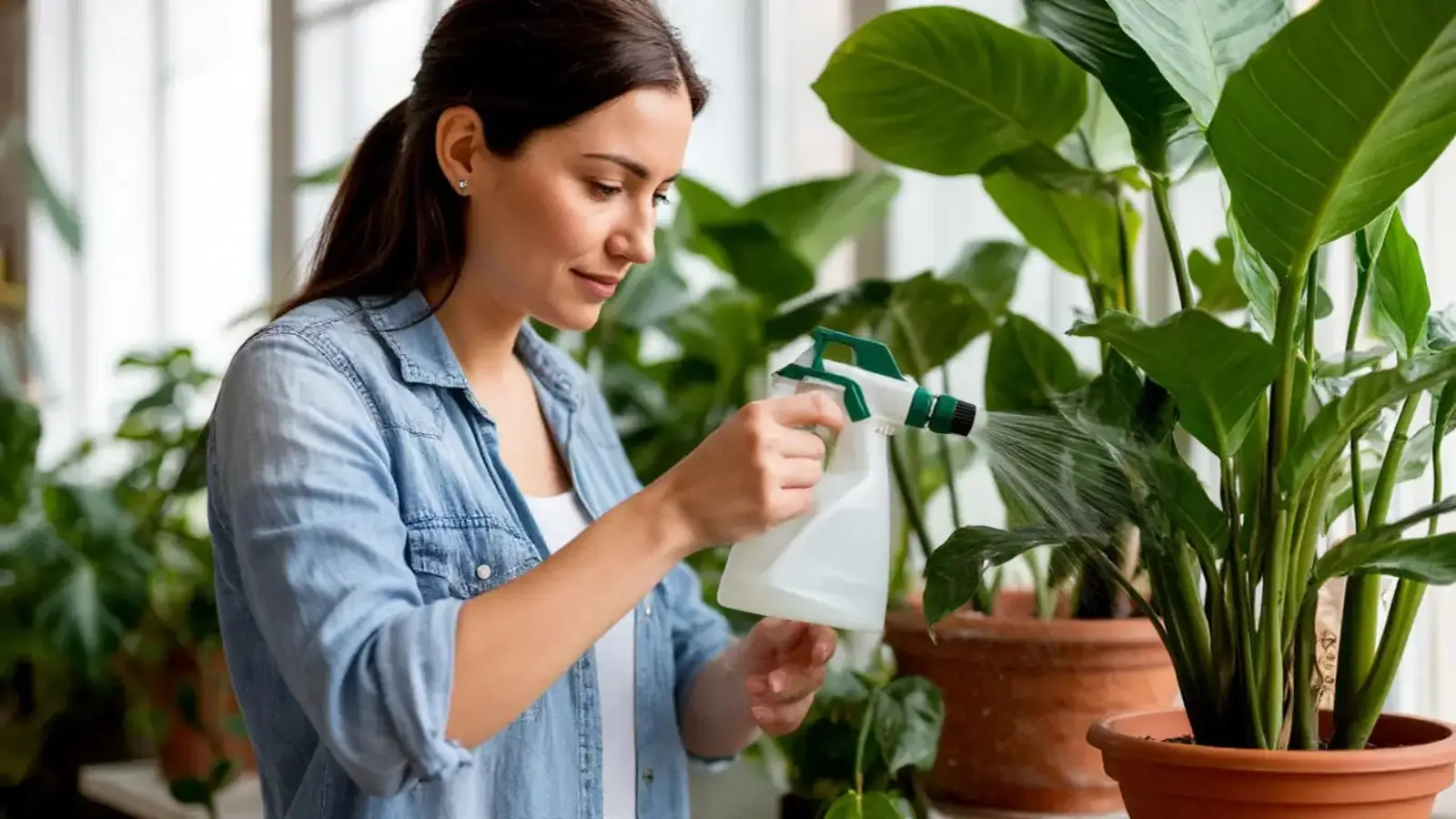https://boda.su/en/posts/id596-plant-spraying-myths-benefits-and-effective-leaf-care
Plant Spraying: Myths, Benefits, and Effective Leaf Care
The Truth About Plant Spraying: When It Helps and When It Doesn’t
Plant Spraying: Myths, Benefits, and Effective Leaf Care
Discover the real purpose of spraying plants. Learn why it doesn’t boost humidity, how to clean leaves effectively, and when foliar sprays truly benefit growth.
2025-10-01T10:56:07+03:00
2025-10-01T10:56:07+03:00
2025-10-01T10:56:07+03:00
Humidity Without Illusions
Many plant enthusiasts believe that spraying leaves helps keep the air moist. In reality, the effect is fleeting. The thin layer of water evaporates quickly, and humidity levels drop again. To make a real difference, one would need to spray almost every hour—a task few are willing to keep up with.
Fighting Dust
Spraying is also not the most efficient way to get rid of dust on leaves. A gentle shower or a wipe with a damp cloth does the job far better. For large plants that won’t fit in the shower, carefully cleaning the leaves with a moist cloth is enough to remove accumulated dirt and dust.
When Spraying Works in Your Favor
If the urge to spray remains, it makes sense to use it as more than a cosmetic ritual. Spraying can become a practical tool when combined with useful additives:
Anti-stress solutions – products like HB-101 or Daihosaku GT-S can help plants cope more easily with unfavorable conditions.
Foliar fertilizers – packaging usually specifies the correct dosage for leaf spraying.
Growth boosters – such as succinic acid, known for stimulating plant development.
Beneficial bacteria – for example, Fitosporin-M, which protects against plant diseases.
In this way, spraying stops being a decorative habit and turns into an effective method of delivering valuable substances straight to the leaves.
Plant Spraying, Leaf Care, Humidity Myths, Foliar Feeding, Growth Boosters, Anti-Stress Solutions, Indoor Plants, Fitosporin-M, HB-101, Succinic Acid
2025
articles
The Truth About Plant Spraying: When It Helps and When It Doesn’t
Discover the real purpose of spraying plants. Learn why it doesn’t boost humidity, how to clean leaves effectively, and when foliar sprays truly benefit growth.
Generated by Dall-e
Humidity Without Illusions
Many plant enthusiasts believe that spraying leaves helps keep the air moist. In reality, the effect is fleeting. The thin layer of water evaporates quickly, and humidity levels drop again. To make a real difference, one would need to spray almost every hour—a task few are willing to keep up with.
Fighting Dust
Spraying is also not the most efficient way to get rid of dust on leaves. A gentle shower or a wipe with a damp cloth does the job far better. For large plants that won’t fit in the shower, carefully cleaning the leaves with a moist cloth is enough to remove accumulated dirt and dust.
When Spraying Works in Your Favor
If the urge to spray remains, it makes sense to use it as more than a cosmetic ritual. Spraying can become a practical tool when combined with useful additives:
- Anti-stress solutions – products like HB-101 or Daihosaku GT-S can help plants cope more easily with unfavorable conditions.
- Foliar fertilizers – packaging usually specifies the correct dosage for leaf spraying.
- Growth boosters – such as succinic acid, known for stimulating plant development.
- Beneficial bacteria – for example, Fitosporin-M, which protects against plant diseases.
In this way, spraying stops being a decorative habit and turns into an effective method of delivering valuable substances straight to the leaves.

